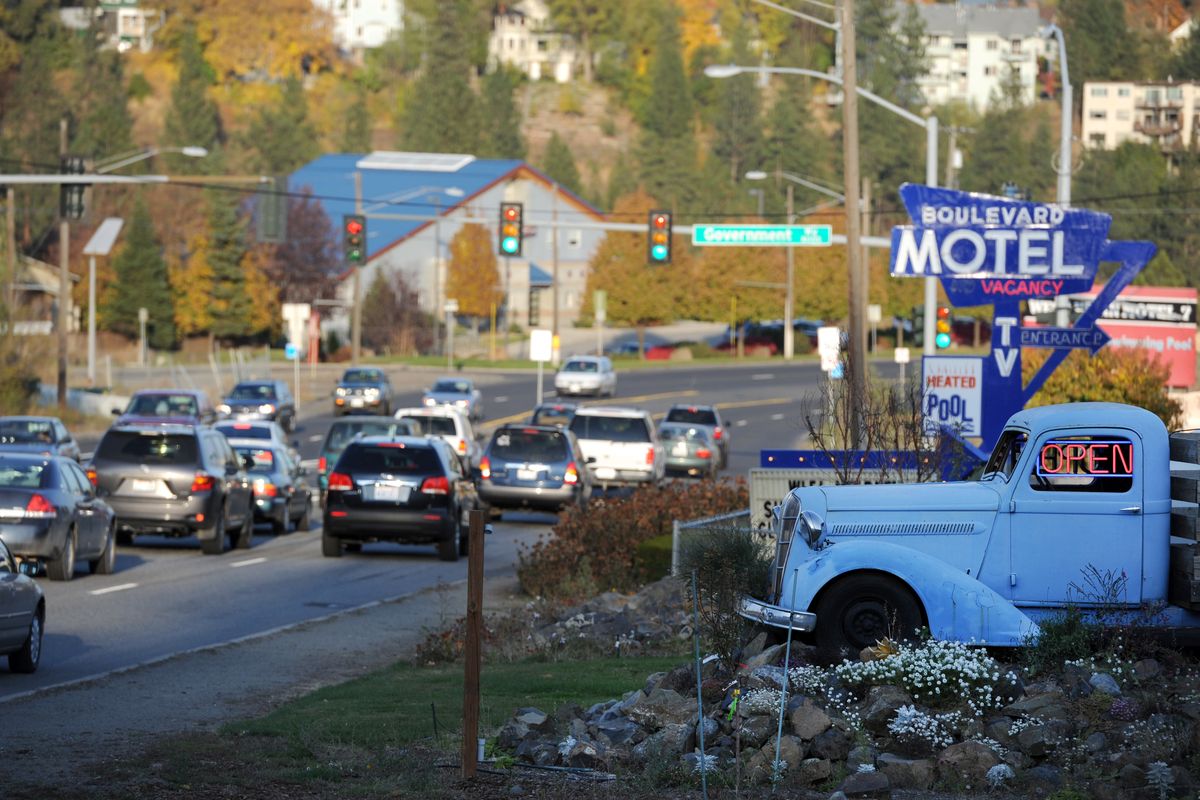Traces of historic trans-America route still found in Spokane

Most people in the Inland Northwest have never heard of the Three Flags Highway – until now.
If you call up a Google map, you will find it running through the heart of Spokane.
It comes up Interstate 90 from the southwest and turns north on Division Street on the same route as U.S. Highway 395.
That’s because the Three Flags Highway is U.S. 395.
The name comes from a 1930s promotion of the inland route linking Mexico, the U.S. and Canada.
“I didn’t even know what it was,” said Diana Dickerson at the Tyler Store in southwest Spokane County along the former route of the highway.
She’s not alone. The name wasn’t used here.
In the old days, U.S. 395 ran from Laurier at the Canadian border south through Colville, Chewelah, Deer Park, Spokane, Cheney, Tyler and Sprague on its way south to San Diego.
The name took root in Southern California starting in about 1931 and was promoted as far north as Southern Oregon for years.
In 1948, a tiny article appeared in The Spokesman-Review announcing a meeting of the Three Flags Highway Association in Lakeview, Ore.
It wasn’t exactly Route 66, but that didn’t stop boosters in California, Nevada and Oregon from extolling the highway’s scenery and attractions. One of their slogans was “Three countries, one road.”
This far north, U.S. 395 from Spokane to the Canadian border was known in the 1920s as the Inland Empire Highway or State Road No. 3, said Mike Wendt, a librarian at the Washington State Department of Transportation.
The segment to the south was called the Central Washington Highway or State Road No. 11, according to the WSDOT.
John King at AAA in Seattle said he vaguely remembers hearing the Three Flags name “ages ago” having grown up in a family that took a lot of vacations on the open road in the Pacific Northwest.
Historians in Southern California are trying to revive the name as part of an effort to reclaim the motoring past in small communities south and east of Los Angeles.
“It was also known as the Mother Road of the West,” said Jeffery Harmon of the Historic Route 395 Association in California.
The group wants to preserve the vintage motor courts, gas stations, restaurants and signs that still dot the old route, in part as an engine for economic redevelopment.
Segments of the old highway exist as city streets and secondary roads. The state is allowing communities to post historic route signs on those.
In Washington, the construction of Interstate 90 in the early 1960s caused U.S. 395 to be joined with the freeway, taking it away from Ritzville, Sprague, Tyler and Cheney.
In the old days, the highway came into Spokane on Hayford Road on what is now U.S. Highway 2, descending Sunset Boulevard where several old motor inns still stand.
A 1927 map shows that the highway going north left Spokane on Monroe and Wall streets to what is now called Whitworth Drive.
The highway route has changed many times over the years with bypasses and other improvements.
Spokane is the first place that the 395 designation was used.
In 1926, the federal government considered U.S. 95 in Idaho as the main north-south highway, but identified several spur routes with three-digit numbers – U.S. Highways 195, 295 and 395.
At that time, U.S. 395 only applied to the section from Spokane to the Canadian border.
In the 1930s, the U.S. 395 designation was added to the entire length of the highway.
Harmon’s advice for anyone who is curious about this history: “Get off the freeways and slow down a little bit.”
Veterans can get aerospace training
Spokane Community College officials are hiring a coordinator to encourage veterans to enroll in a new aerospace worker training program.
U.S. Sen. Maria Cantwell, D-Wash., visited SCC on Friday to talk about training to supply job candidates to some 80 employers involved in aerospace in the Inland Northwest.
The training program is being implemented statewide with a $20 million grant backed by Cantwell.
I-90 pass work ending for winter
Lane restrictions on Interstate 90 near Easton and Cle Elum were scheduled to end last week as crews wrapped up work for the winter.
At the construction site just east of the pass, intermittent delays are possible as workers reduce traffic to one lane in each direction.
Night travel will be reduced to one lane this week.
Latah Bridge barriers down, but work left
On I-90 in Spokane, barriers were removed last week on the Latah Bridge, reopening the span to three lanes in each direction and ending months of slowdowns through the area.
But work is not finished for the season. Lane restrictions are still occurring on the Sunset Hill section of the freeway southwest of the bridge.
A winter shutdown is expected. Work will resume in the spring to grind out ruts and replace broken concrete.